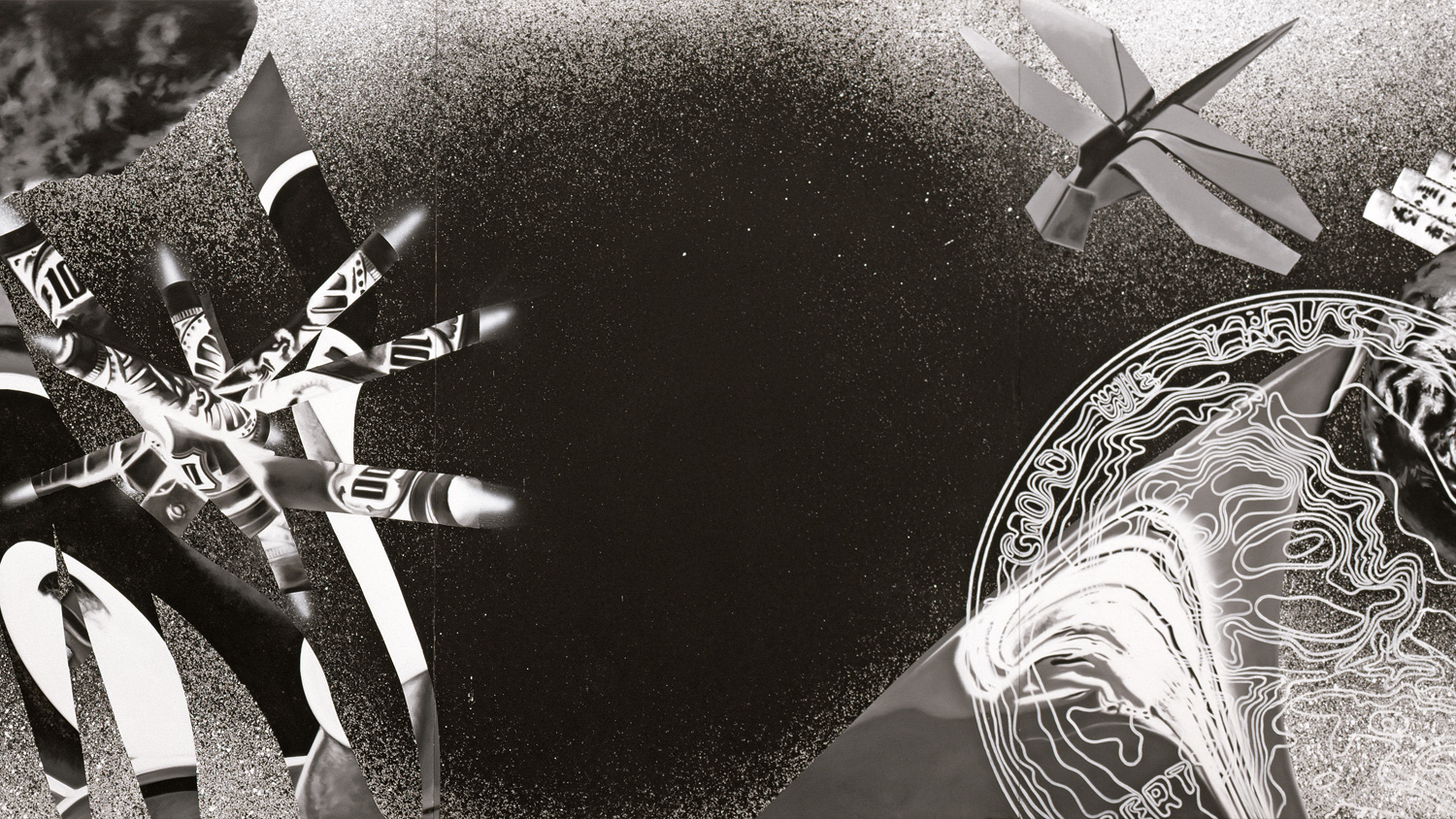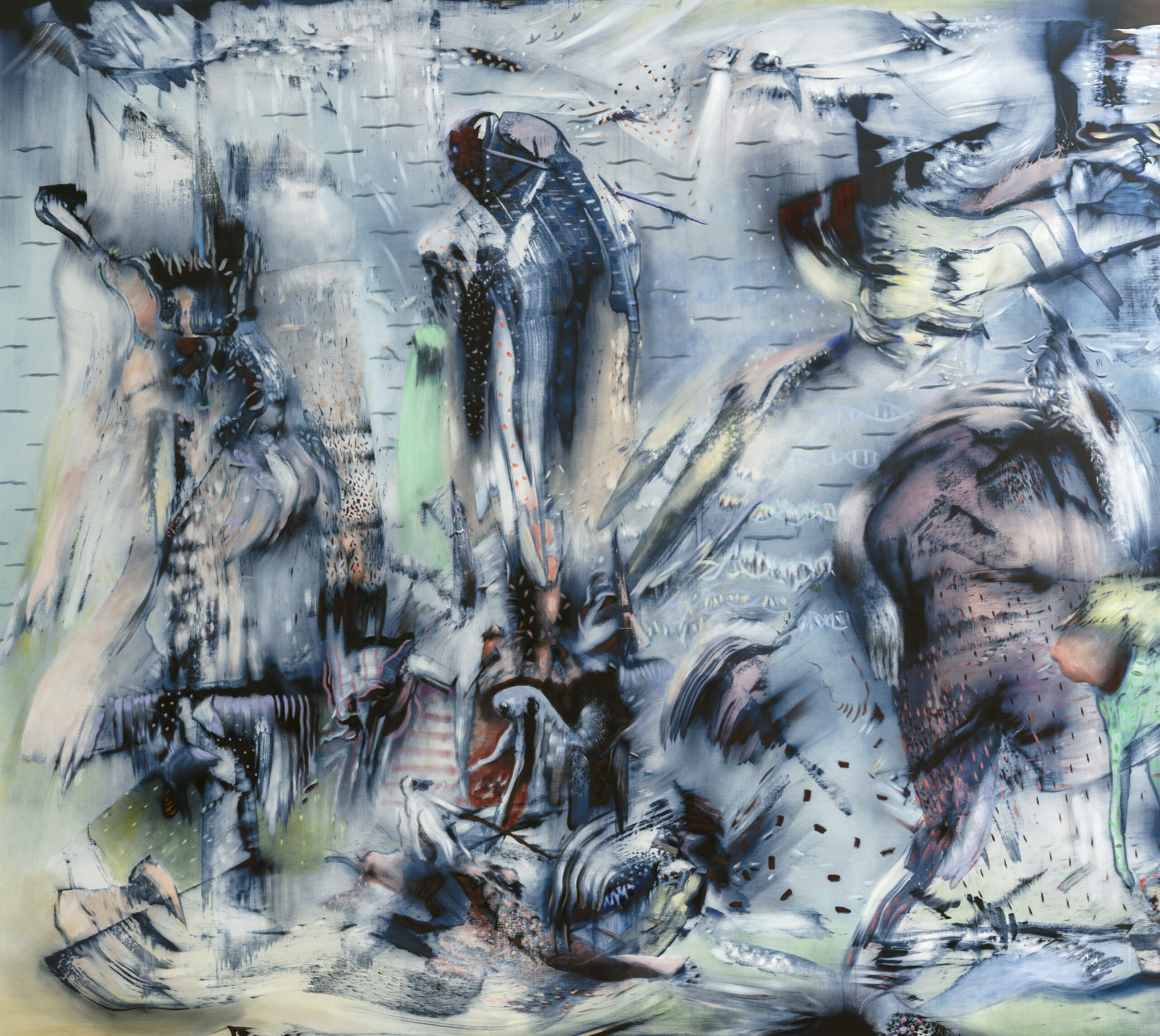Take a trip through James Rosenquist’s Time Dust – Black Hole, a painting spanning 35 foot that depicts an unexpected collection of detritus from human travels and exploration in space.
James Rosenquist’s Time Dust – Black Hole

James Rosenquist’s monumental Time Dust—Black Hole (1992) is both a celebration of our natural habitat and an elegy to its desecration on a cosmic scale. Rendered in oil and acrylic, the work spans 35 feet and is constructed of 7 individual panels.
At its center, a mystical nothingness. Pigment so dark it might not be there at all.
“This came out of an idea I had been thinking about: the area in space where the United States and Russia had jettisoned many tons of space junk. It occurred to me that this was a kind of permanent museum where nothing would ever disintegrate. Imagine an old square-rigged ship out there in fine shape, sailing on forever.”
A sailboat, tipped onto its side, appears to be drifting further into the picture’s galactical depths.
To its right, another type of vessel: an X-shaped formation, consisting of multiple pencils, looms like an invading spaceship. These writing instruments were used, the artist explains, “like a propulsion system, meant to convey the old adage that the pen is mightier than the sword.”
A soda can, as if a space shuttle, whizzes between several asteroids and the edge of a burning star.
A logjam of rolled hundred dollar bills collide, propelled by jet flares.
On the right side of the work, a punctured space-food bag hints at a human presence—astronauts in alien territory.
Inexplicable connections are formed. An absurdist snapshot of American life.
Time Dust—Black Hole is a painting filled with representational objects that resonate both symbolically and formally. At different points in his career, Rosenquist has emphasized the primacy of one or the other. “You have to look at composition, color, and space. Visual invention is the most important priority,” he said. Yet also, “While my imagery may seem enigmatic, there is always a story behind the pictures.”
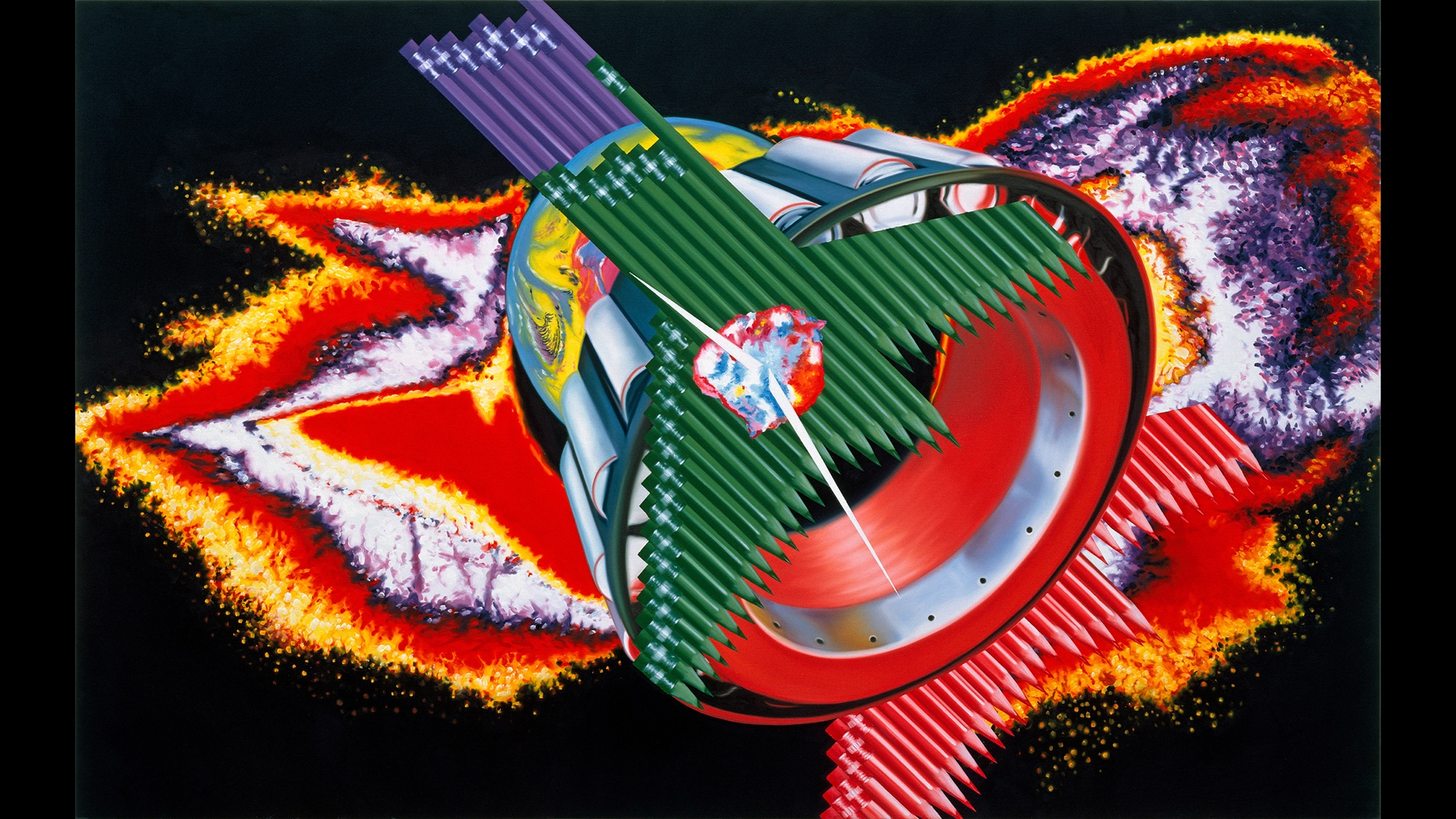
Rosenquist would reuse images in multiple works.
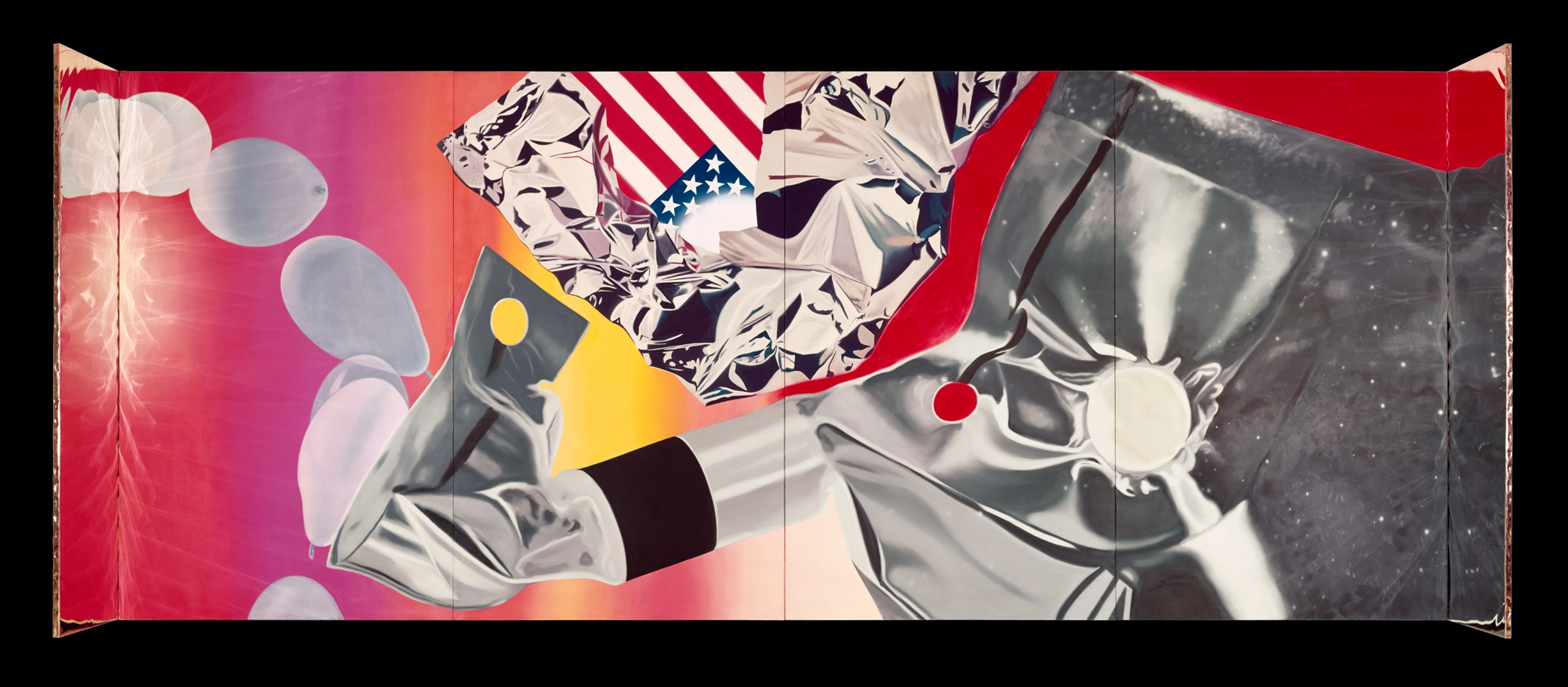
He was drawn to their various formal properties, testing their resonance in altered contexts..
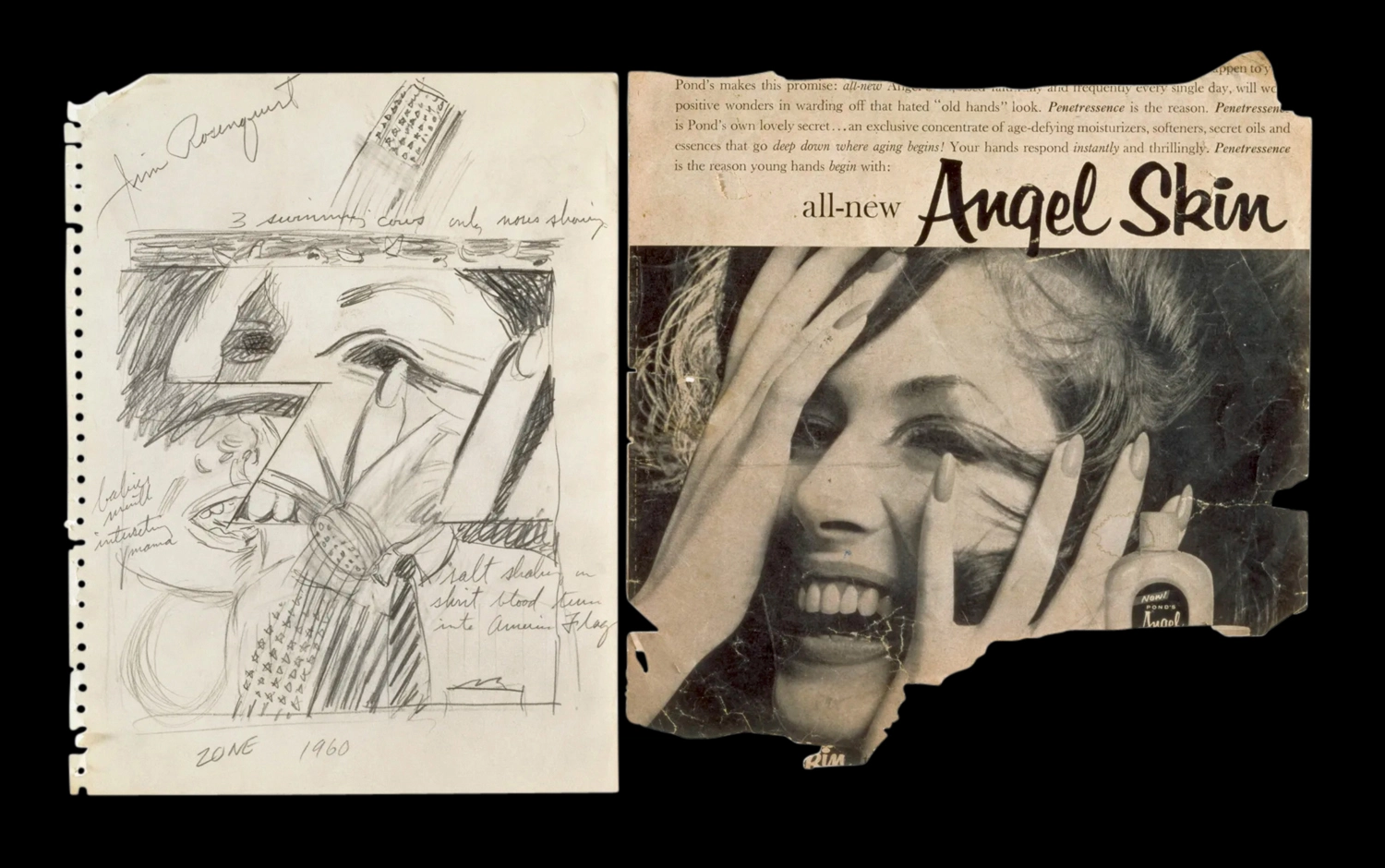
Many of the images he worked with were sourced from his collection of printed reference materials, drawn widely from news and fashion magazines, engineering manuals, mechanical guides and scientific documents on plant life.
Fragmenting, photocopying, cropping these images, and adding the skillful gestures he learned during his time as a billboard painter, Rosenquist’s imagery creates a visual language distinct from his contemporaries in Pop and Abstract Expressionism.
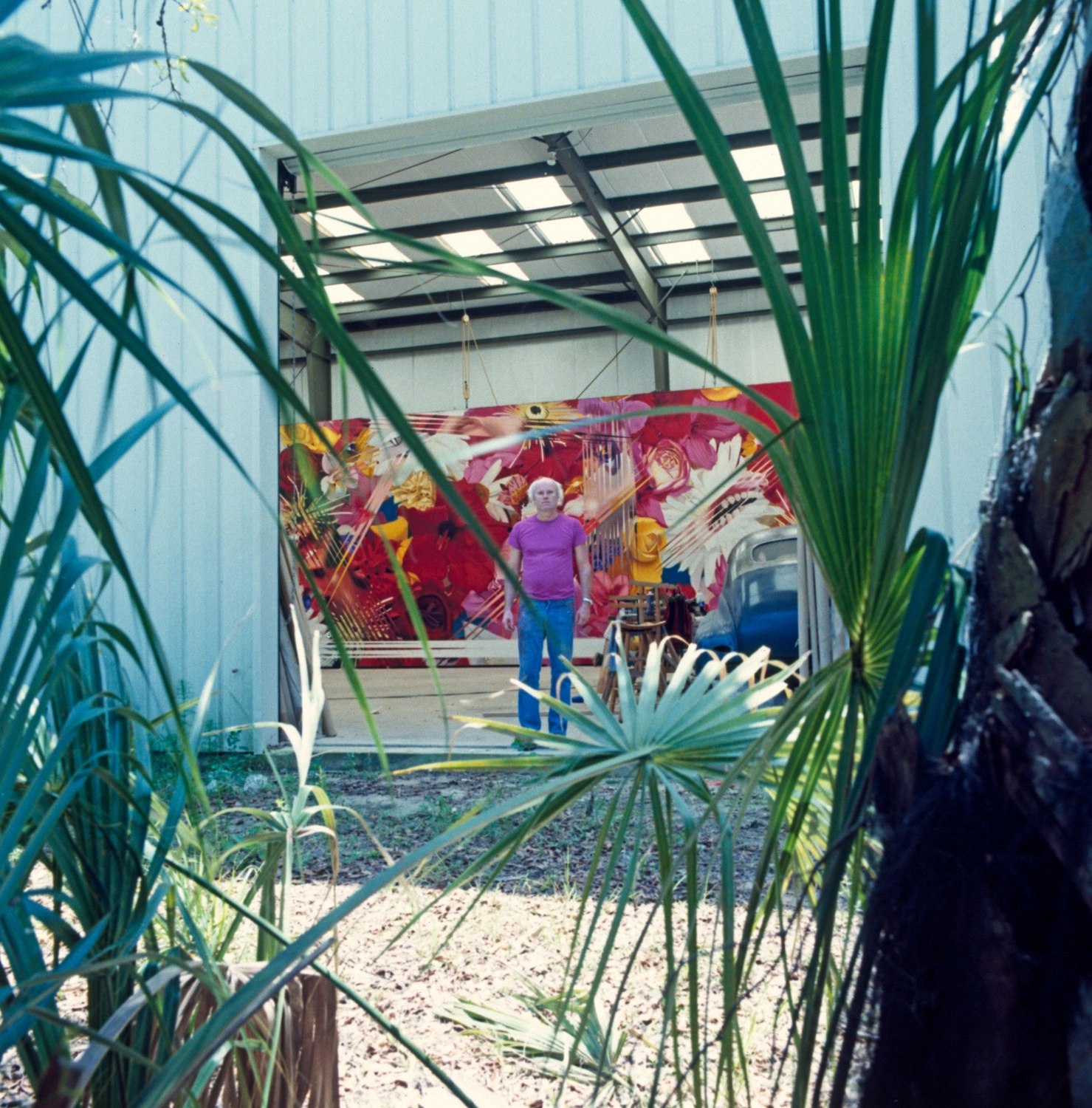
In the late 1970s, over a decade before Rosenquist came to realize Time Dust—Black Hole, he left New York City to set up a studio in Florida. Utterly novel in its luscious array of flora and fauna, the environment felt like an alien landscape to the artist.
Rosenquist saw the gradual, then dramatic, shifts in both ecology and climate around him much more palpably than he did in the city.
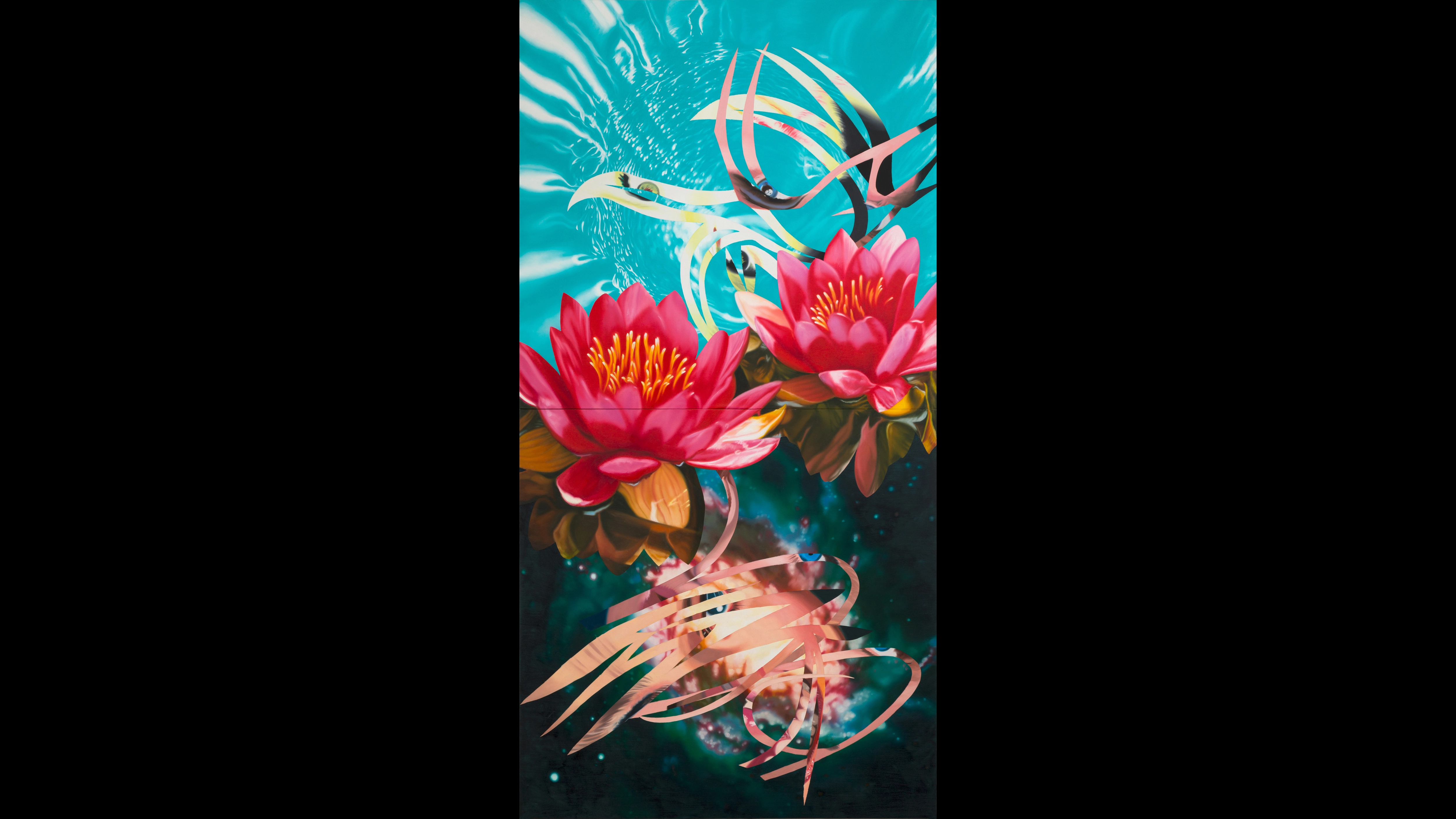
The artist’s Welcome to the Water Planet series, painted in the late 1980s, gives some clues to his shifting perspective during this time. Take Sky Hole (1989).
“Because of the bright imagery—the lotuses, the flowers, the stars—they may seem bright and cheery on the surface, but they all had a darker meaning. People around that time would ask me, ‘Why have you been painting flowers for the past few years?’ And I’d tell them, ‘I’m looking for the evil in flowers, like Baudelaire’s Fleurs du mal.’”
Nature is a strange life force, uninterested in the concerns of humanity. Conversely, humanity disregards nature and its perfectly orchestrated balancing acts. Beauty is blighted by corruption and consumption.
Baudelaire is a pertinent reference. The French poet rejected the idea of the fundamental goodness of man or the supremacy of nature. He was also known for his striking symbolism.
It was this, Rosenquist’s interest in the complex, even ambivalent, tenor of the natural world that led him to widen his view and begin to explore further into the scale and the symbolism of the cosmos.
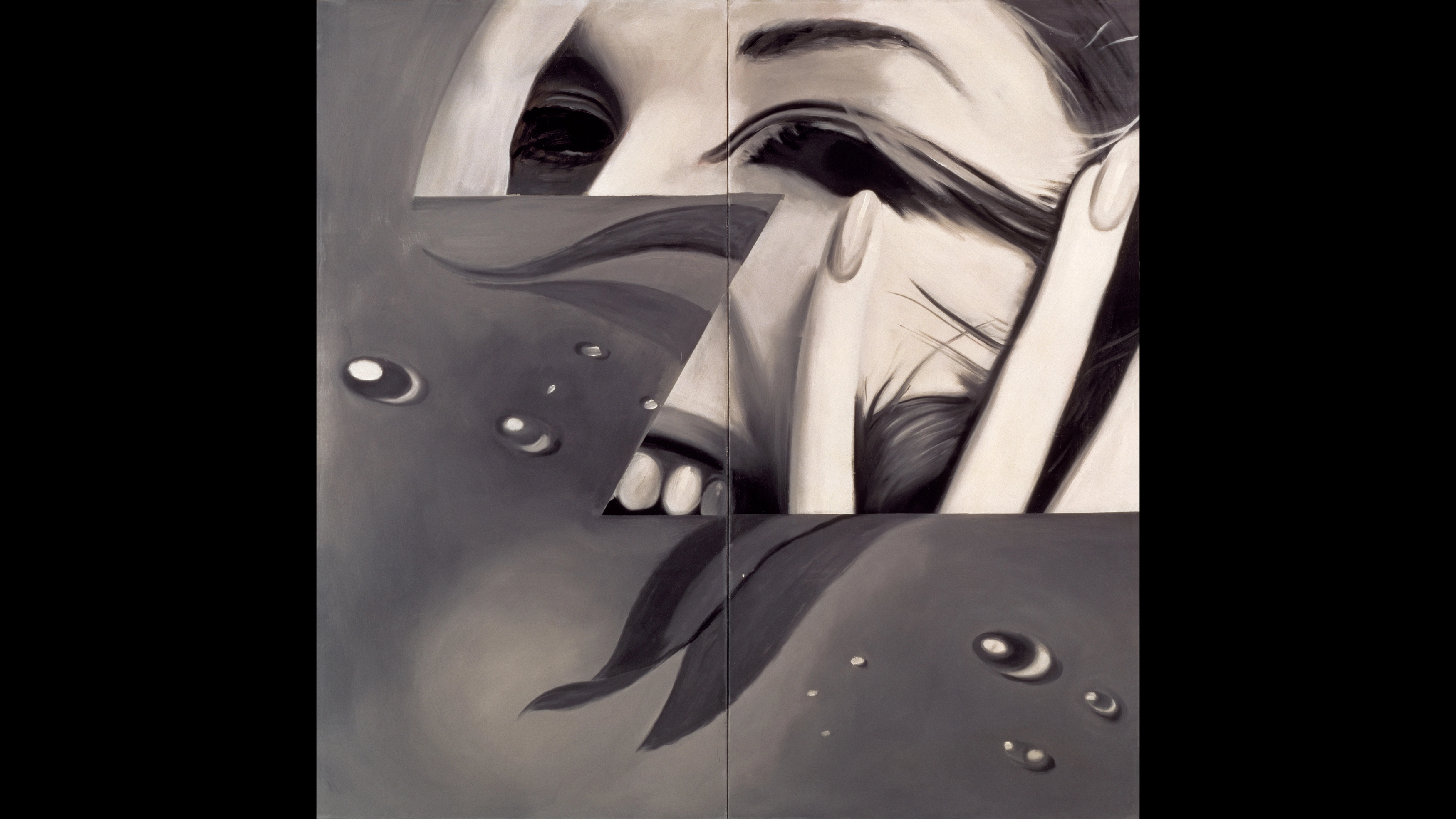
A painting in black and white might seem an outlier for an artist celebrated for his works in vivid color. Since the early 1960s however, Rosenquist had been experimenting with the palette, including Zone (1961).
Both Zone and Time Dust Black Hole are rendered in grisailles, constituted entirely from shades of gray. This technique has roots in Old Master painting, resembling the drawings, normally in monochrome, that artists from the Renaissance on were trained to produce.
In the publication accompanying the artist’s 2003–2004 retrospective at The Guggenheim, Curator Julia Blaut writes, “The omission of bright colors, for the Cubists, for example, focused attention on the contour and structure o f the objects represented. And while this formal imperative is applicable to Rosenquist, the use of gray, black, and white in his paintings, as it often was in Cubist compositions, was determined by the colors of the media sources.”
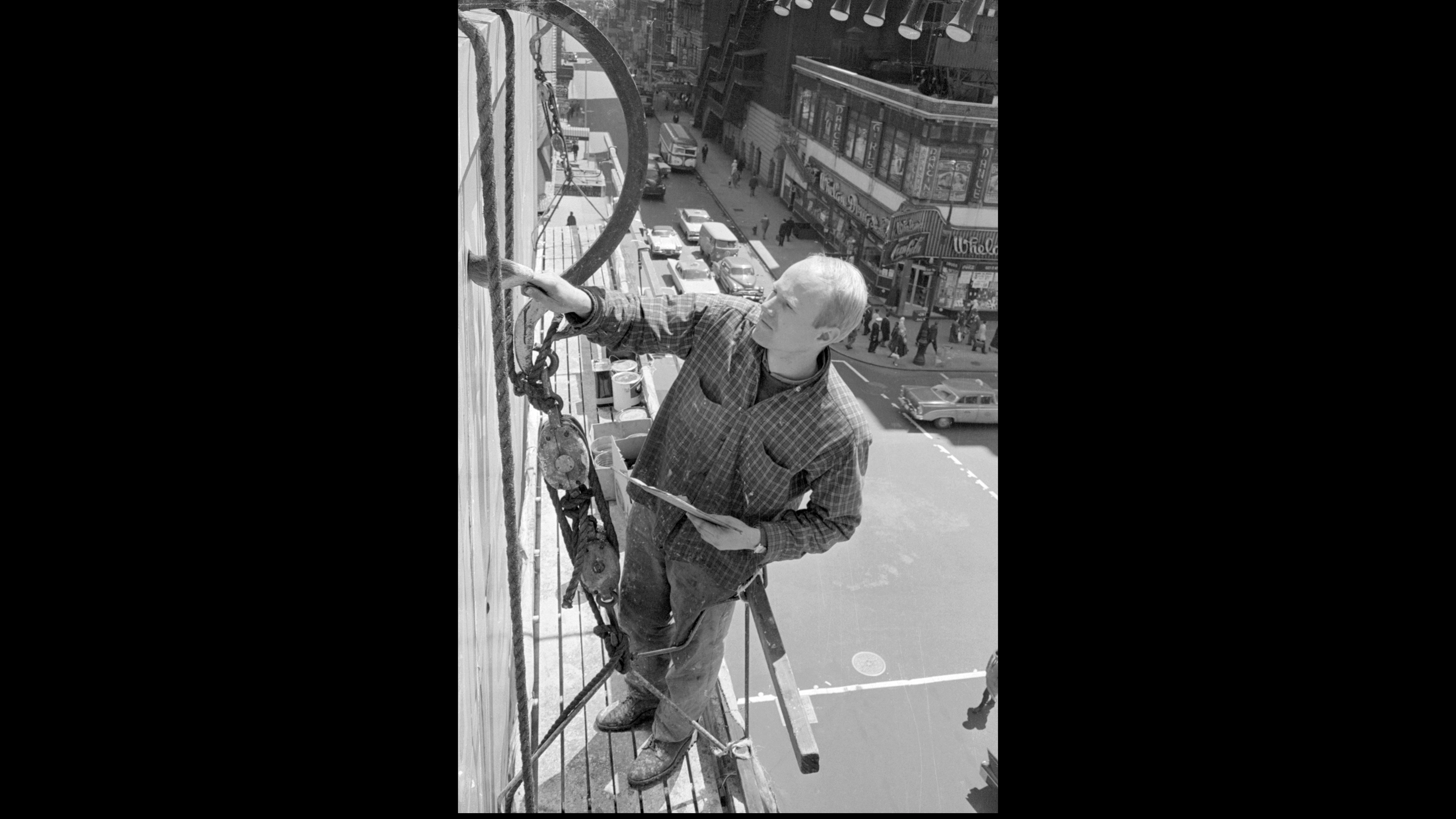
Rosenquist famously started his career as a billboard painter, scaling up small photographic images and copying them in paint with near camera-like precision.
In his autobiography, Painting Below Zero, Rosenquist writes, “All the tools you need to paint a billboard are paint, brushes, a two-foot ruler, and blue-chalk string to snap the line. That’s it. Extremely simple. I thought that if I could learn that technique, using these four things I could paint anything. I could paint the Sistine Chapel using just those four things.”

Melding incompatible images in exaggerated scales has a specific effect. Rosenquist emphasizes the lawlessness of space; the absence of the physics that we rely upon on earth to make sense of everything. We are forced to look more closely. What is happening?
“On a flat two-dimensional surface, I try to paint layers and layers of ideas, and let them seep out as slowly as possible. In my paintings you only think you see it instantly.”
Perspective is complicated. An inconceivable number of realities compete for dominance. Our visual perspectives, crucial in positioning our bodies in space and time, have a metaphorical cousin: our philosophical perspectives. How do we process what we see in the world?
The microscope and telescope were invented just a few decades apart, in 1590 and 1608 respectively. What seemed to be the common reality of the world was, in a short time, exploded. A new order. Not only cells, but planets. Not only planets, but galaxies.
A central, repeating motif in the works of this period is the artist’s adaptation of the Ishihara Test for color blindness. A circle formed of seemingly randomized dots, varying in color and size, was used to assess red-green color blindness in the traditional test. In his version, Rosenquist updated the central image (typically a number) with a bee or flying pollinator.

The test embodies multiple complexities regarding vision and perception. Its design shares many formal properties with an image of a petri dish, or a night sky as seen through the telescope of an observatory. For Rosenquist, the symbol proved irresistible.
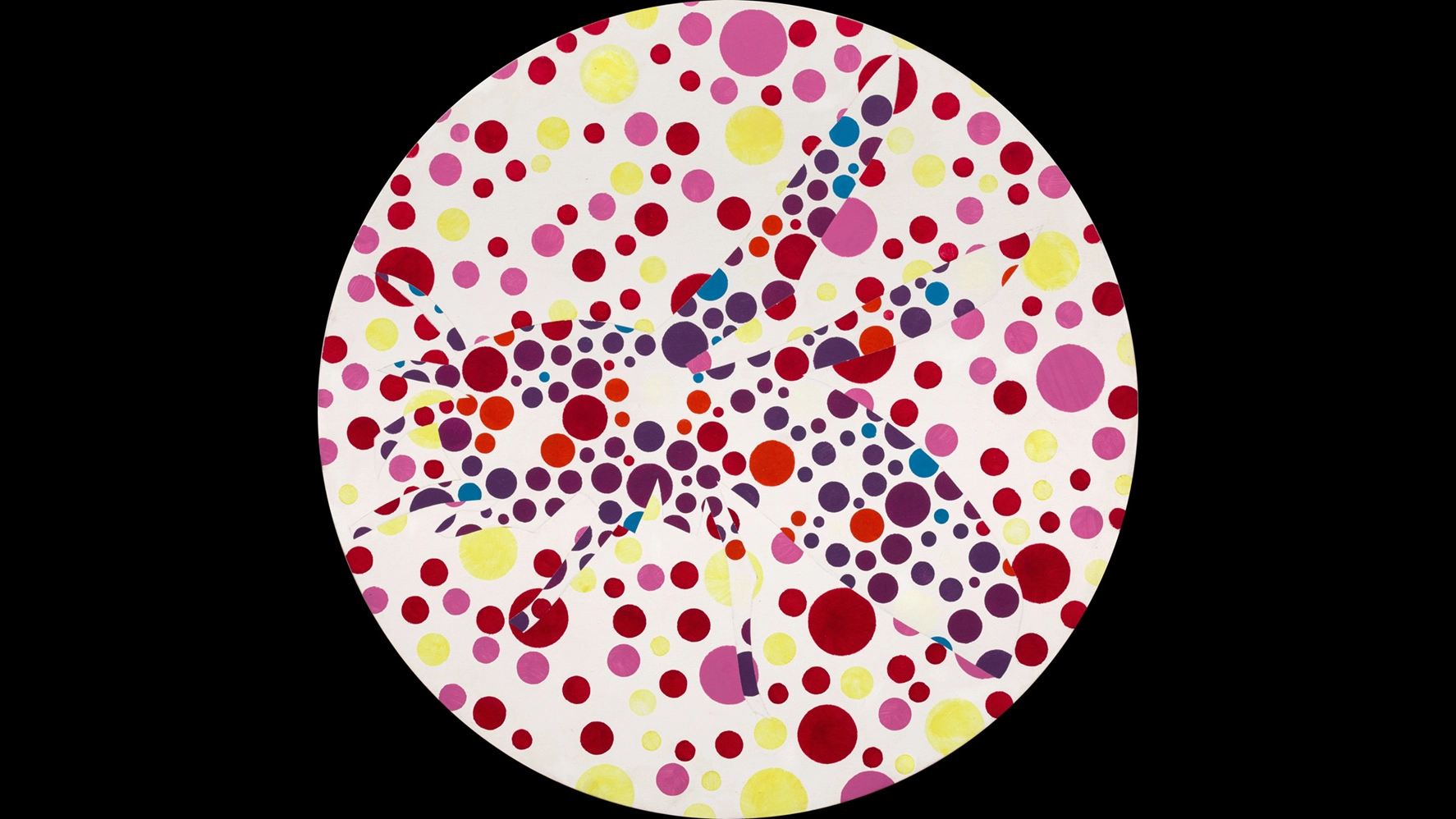
Exploding Pollen (1992) is realized on a circular canvas and replaces the requisite central number with the semi-abstracted shape of a honey bee: an insect critical in, and symbolic of, the interdependence of our food systems.
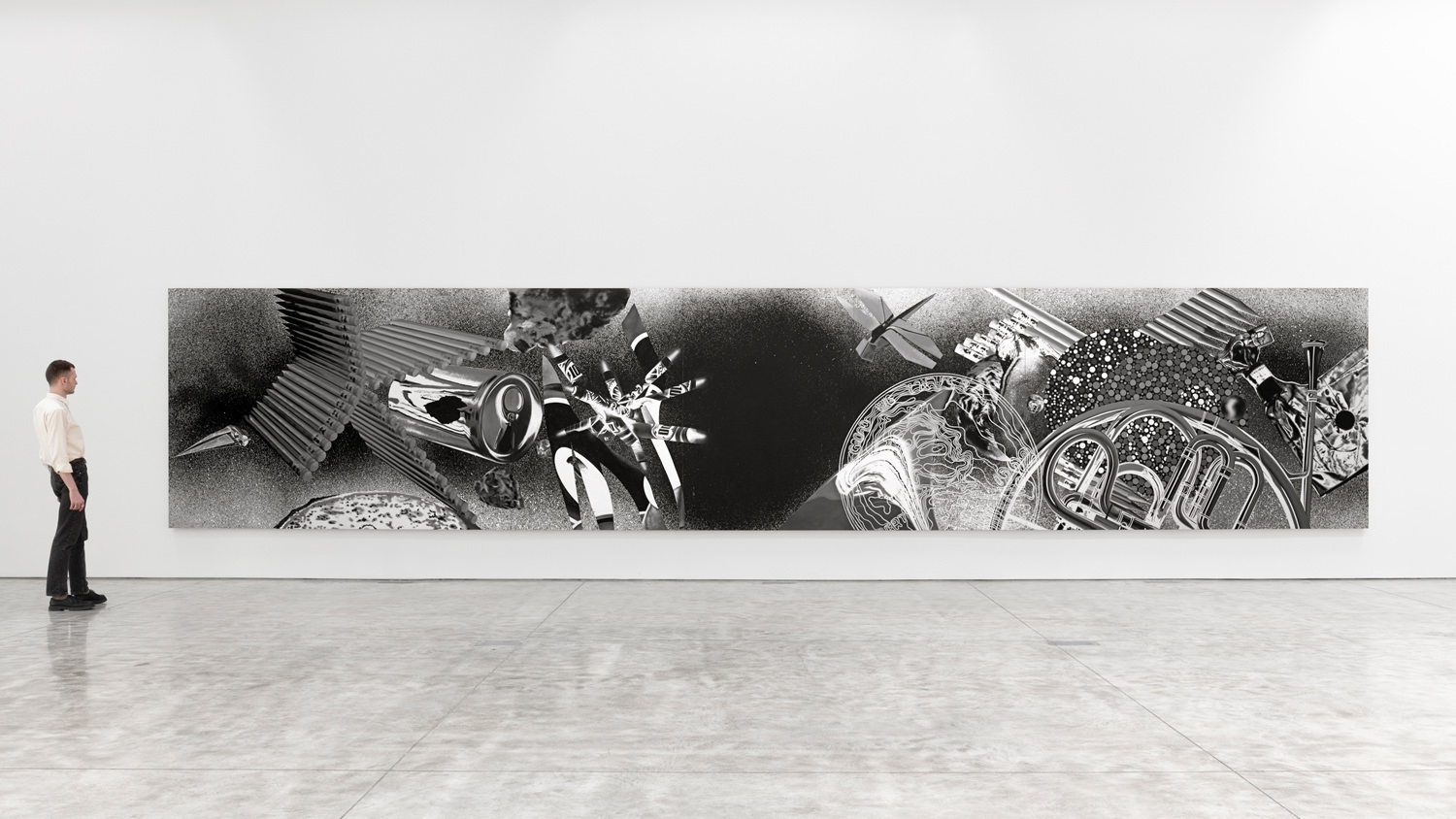
Rosenquist was never one to shy away from addressing the political and social tensions of his age. In his diaries, he wrote about the abiding intensity of the threat of disaster. The ways in which “something so huge and catastrophic” as a nuclear threat, “could just swim in and out of our consciousness.”
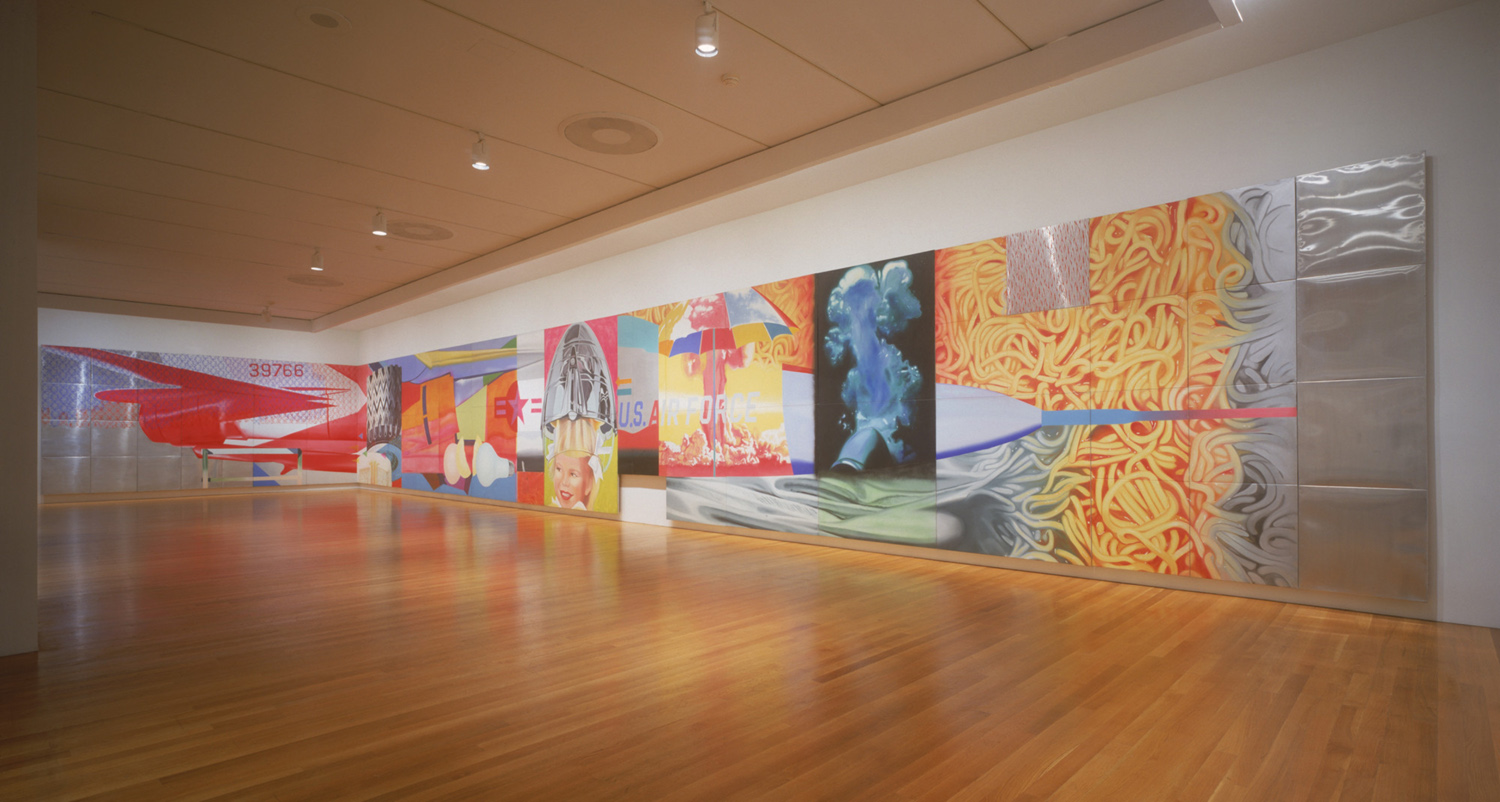
Arguably the artist’s most famous painting, the monumental F-111 was painted in 1964–65, in the midst of a turbulent decade in US history.
The fighter jet it depicts (and for which it is titled) spans the length of the composition. At the time of the painting’s completion, the American military industrial complex was sustaining the country’s economic boom. But there was little information in the mainstream media that touched on how these weapons afflicted lives outside of the country.

This imagery recurs throughout Rosenquist’s oeuvre and is equally as present in Time Dust—Black Hole. Metallic, lustrous surfaces are rendered in grayscale. The explosive clouds; the mechanical dragonfly; the outline of a penny, its inscription just legible: “In God We Trust.”
The french horn, powerful simply for its absurdism, brings to mind the melancholic tones of a stately funeral. How did these objects end up here? What ambitions do they speak of? What disasters?
As we mark thirty years since the painting of Time Dust—Black Hole, how far have we come? What else floats out there in the cosmic abyss?

The great curator Walter Hopps once described Rosenquist’s work as “visual poetry”. Delicately balancing unrelated imagery, melding ideas drawn from both our communal and internal lives, he breaks ground on new sites of meaning.
The great curator Walter Hopps once described Rosenquist’s work as “visual poetry”. Delicately balancing unrelated imagery, melding ideas drawn from both our communal and internal lives, he breaks ground on new sites of meaning.
A moment of contemplation shared with James Rosenquist. A moment to consider enormity, complexity: the things that we are able to share. While there’s still time.
Time Dust—Black Hole, Sky Hole, and Exploding Pollen are featured as part of James Rosenquist, on view at Kasmin, 509 West 27th Street, through June 4, 2022. To view the exhibition online, click here.
Image Credits:
James Rosenquist, Time Dust–Black Hole, 1992, oil and acrylic on canvas, 84 x 420 inches. © 2022 James Rosenquist, Inc. / Licensed by Artists Rights Society (ARS), NY. Used by permission. All rights reserved.
James Rosenquist, Flamingo Capsule, 1970, oil on canvas, with aluminized Mylar. 9′ 6 3/16″ x 22′ 11 15/16 inches. © 2022 James Rosenquist Foundation / Licensed by Artists Rights Society (ARS), NY. Used by permission. All rights reserved.
James Rosenquist, Source and Preliminary Study for Zone, 1960, Magazine cutout and pencil on paper, 11 1/4 x 18 1/2 inches. © 2022 James Rosenquist Foundation / Licensed by Artists Rights Society (ARS), NY. Used by permission. All rights reserved. Image courtesy of Thaddaeus Ropac Gallery.
James Rosenquist with The Persistence of Electrical Nymphs in Space in Aripeka studio.
James Rosenquist, Sky Hole, 1989, oil on canvas, 108 x 55 inches. © 2022 James Rosenquist, Inc. / Licensed by Artists Rights Society (ARS), NY. Used by permission. All rights reserved.
Rosenquist “on the boards” in Times Square, New York, ca. 1959. © Bettmann/CORBIS.
James Rosenquist, Zone, 1960–61, Oil on canvas, 95 x 95 1/2 inches. Philadelphia Museum of Art, Purchased with the Edith H. Bell Fund, 1982. © 2022 James Rosenquist Foundation / Licensed by Artists Rights Society (ARS), NY. Used by permission. All rights reserved.
James Rosenquist, Exploding Pollen, 1992, acrylic on canvas, 34 x 34 inches. © 2022 James Rosenquist, Inc. / Licensed by Artists Rights Society (ARS), NY. Used by permission. All rights reserved.
James Rosenquist, F-111, 1964–65, Oil on canvas and aluminum (multipanel room installation). 10′ x 86′ [120” x 1032”]. The Museum of Modern Art, New York, Purchase Gift of Mr. and Mrs. Alex L. Hillman and Lillie P. Bliss Bequest (both by exchange). © 2022 James Rosenquist Foundation / Licensed by Artists Rights Society (ARS), NY. Used by permission. All rights reserved.

